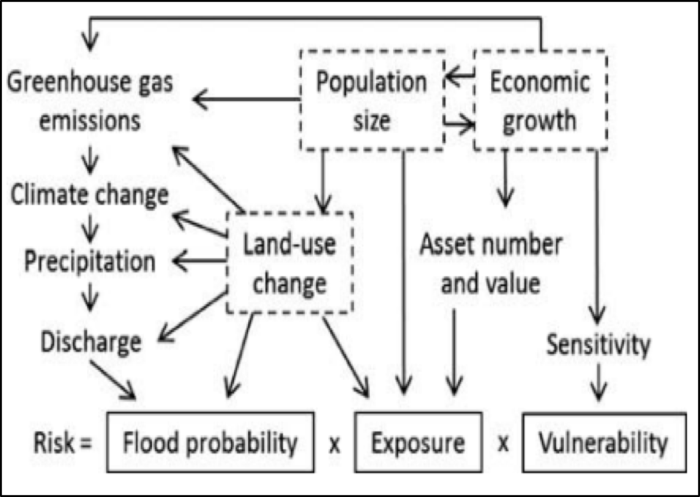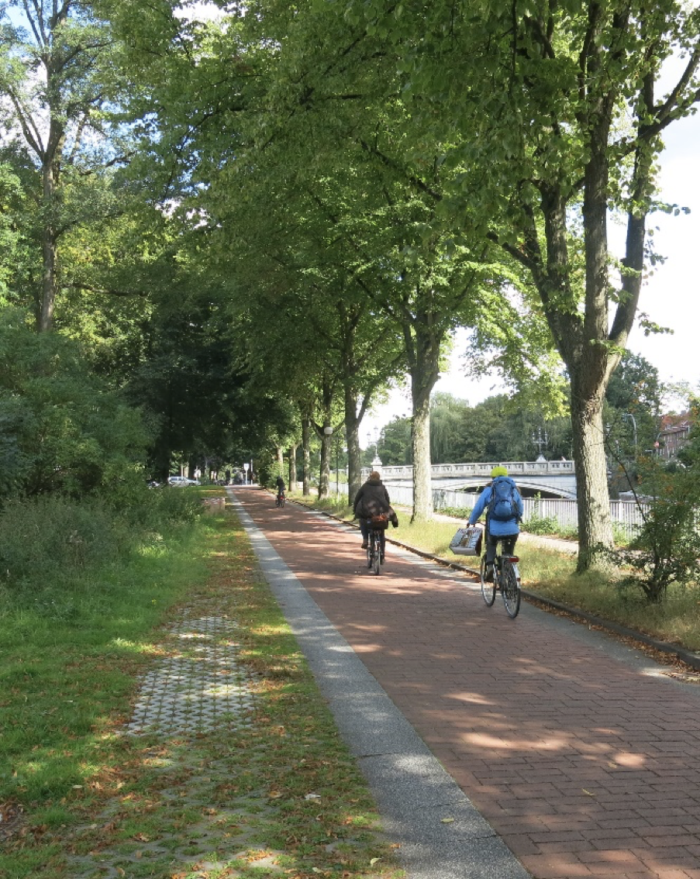Author: Brendon Taylor
Urban centres have historically facilitated opportunities for economic development and improved access to goods and services through trade, commerce, transport and employment. The countries of the Caribbean provide examples of the role of urban settlements in promoting economic growth due to their history of colonisation. However, whether uncontrolled or planned, urban expansion can pose challenges to natural resources and the environment. This is because the conventional expansion of urban settlements modifies the natural landscape via the removal of vegetation and the creation of impervious surfaces. Since impervious surfaces prohibit the infiltration and retention of rainfall, water flows across the ground surface as run-off. This typically results in flooding, especially during short and intense rainfall events.
Future expansion of urban populations is inevitable since most projections indicate an increase in the number of individuals living in urban areas. Compounding the issue is the evidence that climate change and climate variability are significantly redistributing rainfall quantities. In the case of tropical regions, months within the dry season are becoming drier while the wetter months are becoming wetter and characterised by heavy, intense rainfall events associated with flooding.

The issue of flooding in urban environments should be a priority topic for action because flooding can pose significant setbacks to economic development where countries are required to reallocate finances from revenue-generating sectors to fund recovery efforts. The socio-economic impacts of flooding were exemplified during the flood events of November 2016 in St. Vincent. The Government of St. Vincent & the Grenadines (2016) reported that the initial estimated costs of damages and losses to the infrastructure sector including transport and utilities and the social sector including housing, health and agriculture were valued at US $25 million and US $6 million respectively. Additionally, the agricultural sector of Trinidad has recorded economic losses estimated at US $20 million due to the destruction of agricultural produce by perennial floods over a 20-year period from 1998 to 2008. Udika (2010, 2) explicitly states that for Trinidad “flooding has become a legacy of unmanaged land use that is exacting a predictable punishment”. Unsustainable practices such as deforestation and the sprawl of unplanned urban developments in elevated areas of the Northern Range have all contributed to the flooding in Port-of-Spain.

The realisation of the significant threat that climate change will pose to urban settlements warrants the modification of existing cities to more sustainable urban water cities. Wong and Brown (2009) indicate that a resilient city is one which values the socio-political principles of public health protection, security in water supply and access, resilience to climate change, social amenity and flood protection. In the context of flood management, green infrastructure (GI) has been promoted as a best management practice with the goal of mimicking and maintaining the natural hydrology of landscapes before they are developed (Miles and Band 2015). Examples of GI include but are not limited to parks, green roofs, open spaces, RWH and constructed wetlands. Cities in Europe have been making ambitious strides to increase the area of natural landscapes in urban areas. Relevant authorities from the city of Hamburg, Germany have embarked on a 20-year strategy from 2014-2034 which is projected to expand the coverage of green spaces in the city to 40% of the total area. The key potential benefits identified from the strategy are improved storm water management, enhanced resilience to the effects of climate change and improved health through active travel. Similarly, several policies and strategies have been berthed following the establishment of the Spatial Planning Act for Copenhagen, Denmark. The Danish Nature Policy details plans for the establishment of 25,300 hectares of natural landscape by 2020. The aims of the policy include but are not limited to increasing carbon sequestration, increasing recreational areas within the city and recovering organic soil which would be otherwise lost to urban development (Danish Ministry of Environment 2014).
It is important to note that both policies are targeting the main drivers of flood probability which are land use change and greenhouse gas emissions as indicated by Figure 1. Hence, it is important that all countries begin to shape their perceptions of the natural environment through the lens of practices such as GI. Urban resilience for future generations will significantly depend on the willingness of present-day decision-makers to be stewards of their environment rather than simply exploiting the environment for economic gain.
References
Danish Ministry of Environment. 2014. “Danish nature policy: Our shared nature”. Policy plan published by the Danish Ministry of Environment, Danish Nature Agency, October 2014, Copenhagen, Denmark.
Government of Saint Vincent and the Grenadines. 2016. “Rapid Damage and Loss Assessment”. A report by the Government of Saint Vincent and the Grenadines with support from the European Union.
Kundzewicz, Z. W., S. Kinae, S. I. Seneviratnae, J. Handmer, N. Nicholls, P. Peduzzi, R. Mechler, L. M. Bouwer, N. Arnell, K. Mach, R. Muir-Wood, G. R. Brakenridge, W. Kron, G. Benito, Y. Honda, K. Takahashi, and B. Shertsyukov. 2014. “Flood risk and climate change: Global and regional perspectives”. Hydrological Sciences Journal 59 (1): 1-28.
Miles, Brian, and Lawrence E. Band. 2015. “Green infrastructure storm water management at the watershed scale: Urban variable source area and watershed capacitance”. Hydrological Processes 29 (2015): 2268-2274.
Udika, Rudo. 2010. “Flood management: An examination of mitigation measures for flooding in urban areas in Trinidad”. Technical report presented at the 46th meeting of the ISOCARP Congress, September 2010, Nairobi, Kenya.
Wong, T. H. F., and R. R. Brown. 2009. “The water sensitive city: Principles for practice”. Water Science & Technology 60 (3): 673-682.
Session
“Youth: The Voice of Hope & Resilience” – Wednesday May 29 |15:50 – 17:00: Walcott Warner Theater
